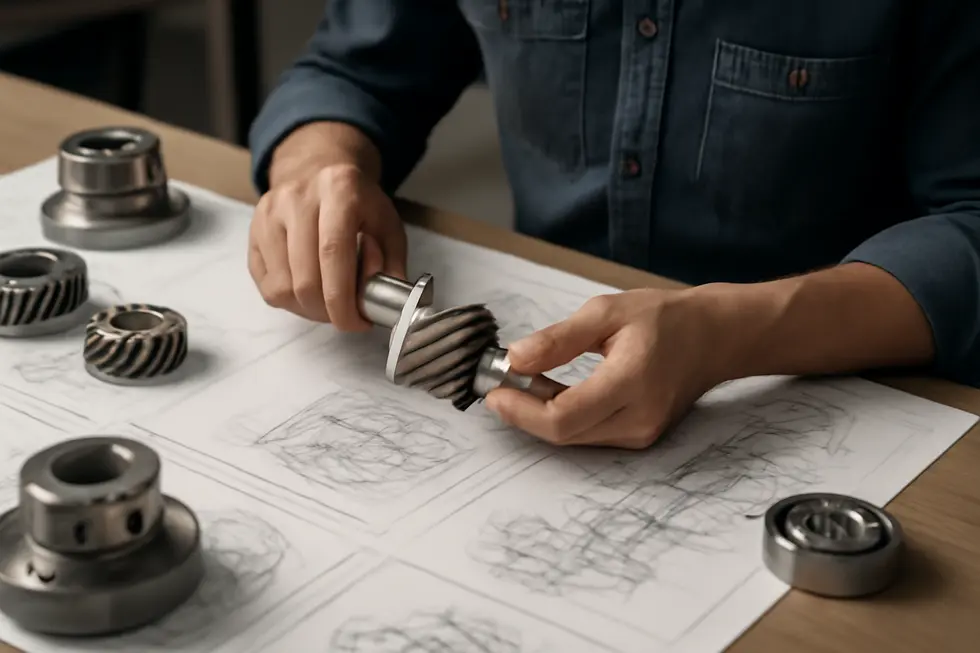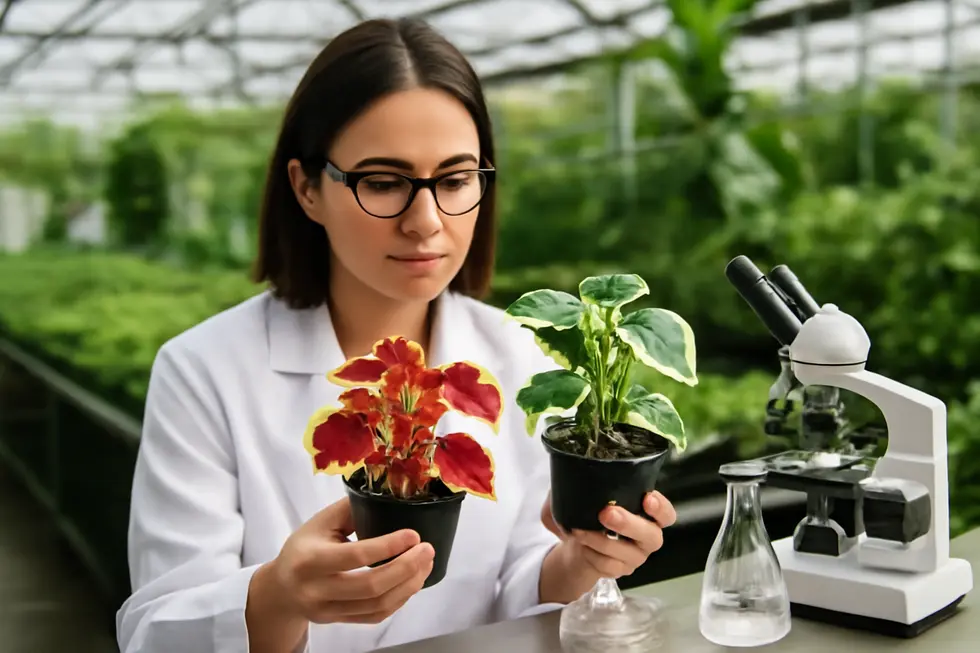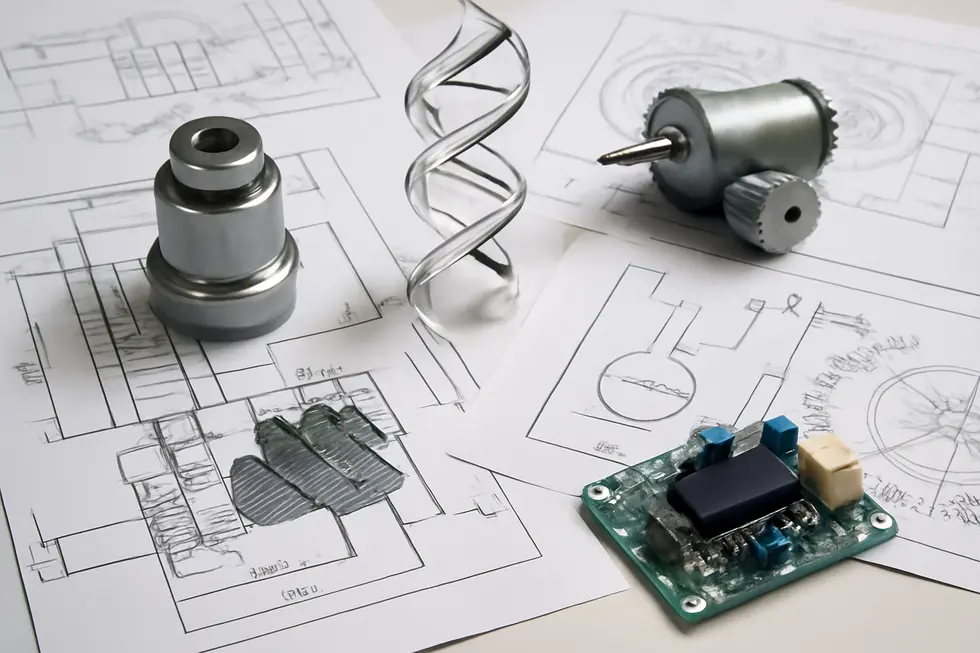Introduction
Patents serve as vital legal tools that empower business owners to secure exclusive rights for their inventions, designs, and innovations. Understanding the various types of patents can strengthen your strategic approach to protecting intellectual property and help you navigate the complexities of the patent system effectively. This guide breaks down the three primary patent categories—utility, design, and plant patents—while exploring specific classifications within these types, and clarifying their legal duration and scope of protection. By gaining insight into how these patents function and how they are categorized, business owners will be better equipped to safeguard their competitive edge and maximize the commercial value of their innovations.
Tables of Contents
Chapter 1: Different Kinds of Patents: Understanding Utility Patents and Their Functional Scope
- The Core of Innovation: How Utility Patents Protect Functional Inventions
- Distinguishing Utility Patents from Design and Plant Patents: A Functional Perspective
- Legal Framework and Application Process Defining Utility Patent Protections
- Exploring the Functional Breadth and Technological Reach of Utility Patents
- Balancing Public Disclosure and Innovation Incentives Through Utility Patents
Chapter 2: Different Kinds of Patents: The Role and Specificity of Design Patents
- How Design Patents Protect the Unique Aesthetic of Inventions
- Design Patents as Catalysts of Aesthetic Innovation and Market Differentiation
- Design Patents in Consumer Markets: Driving Value through Aesthetic Innovation and Strategic Protection
- Navigating Global Legal Landscapes: The Unique Position and Harmonization of Design Patents Across Jurisdictions
- How Design Patents Enhance Brand Identity and Influence Consumer Culture
Chapter 3: Different Kinds of Patents: Plant Patents and Botanical Innovation Protection
- Navigating Legal Protections for Plants: From Asexual Varieties to Genetic Innovations
- Guardians of Green Innovation: Plant Variety Rights and Their Unique Role in Botanical Patent Protection
- Technological Foundations and Legal Nuances of Plant Patents in Botanical Innovation
- Balancing Growth and Sustainability: Economic Effects of Plant Patents on Agriculture and Breeding
- Navigating Geopolitical and Societal Challenges in Plant Patents and Botanical Innovation
Chapter 4: Different Kinds of Patents: Classification Systems Organizing Patent Types and Technologies
- Navigating Patent Types Through Structured Classification Systems
- Global Patent Classification Systems: Structuring Utility, Design, and Plant Patents by Technology
- Global Patent Classification Systems: Structuring Technological Diversity Across Patent Types
- Harnessing AI to Transform Patent Classification and Examination Across Patent Types
- Navigating Innovation: Economic, Technological, and Societal Dimensions of Patent Classification Systems
Chapter 5: Different Kinds of Patents: Technical Subtypes Within Utility Patents
- Process Patents: Safeguarding Innovative Methods and Manufacturing Techniques
- Machine Patents: Guarding the Mechanics Behind Functional Devices in Utility Patents
- Manufactured Articles Patents: Protecting New Products through Structure and Composition
- Protecting Innovation in Chemistry and Materials: Composition of Matter Patents Within Utility Patents
- Specialized Utility Patent Subtypes in Biotechnology and Pharmaceuticals
Chapter 6: Different Kinds of Patents: Legal Duration and Protection Periods of Various Patent Types
- Understanding Utility Patent Duration: Protection Terms and Extensions for Technological Innovations
- Design Patents: Understanding Their Unique 15-Year Protection of Product Aesthetics
- Plant Patents: Exclusive Protection and 20-Year Legal Duration for Asexually Reproduced Plants
- Extending Exclusivity: Legal Duration and Patent Term Extensions for Pharma and Biotech Patents
- Balancing Innovation and Access: Economic, Technological, and Societal Effects of Patent Protection Periods
Chapter 1: Different Kinds of Patents: Understanding Utility Patents and Their Functional Scope

1. The Core of Innovation: How Utility Patents Protect Functional Inventions
Utility patents safeguard the functional essence of inventions, covering processes, machines, manufactured items, and compositions of matter. Unlike design patents that protect an invention’s appearance, utility patents focus on how something works or operates. This protection extends to new and non-obvious functional improvements, vital for securing technological advancements. Representing roughly 90% of granted patents, utility patents require inventions to be useful, novel, and non-obvious. They ensure inventors control making, using, or selling their innovations. For further clarity, explore the USPTO definitions and guidelines on utility patents.
2. Distinguishing Utility Patents from Design and Plant Patents: A Functional Perspective
Utility patents protect the functional and technical aspects of inventions, covering innovative processes, machines, and compositions. In contrast, design patents safeguard the ornamental appearance, focusing solely on an object’s visual traits rather than how it works. Meanwhile, plant patents grant rights over distinct asexually reproduced plant varieties, emphasizing unique biological traits instead of function or design. Utility patents require detailed claims and provide protection for 20 years from filing, while design patents last about 14 years and focus on aesthetics. This clear division ensures inventors choose protections suited to their invention’s nature. For more insights, see the difference between patent types.
3. Legal Framework and Application Process Defining Utility Patent Protections
Utility patents safeguard the functional essence of inventions—covering machines, processes, and compositions of matter with exclusive rights lasting 20 years from filing. Securing these protections requires demonstrating novelty, non-obviousness, and utility through a detailed application including claims and specifications that reveal how the invention works. Throughout examination, inventors must address office actions to validate their invention’s functional scope. Unlike design patents focused on aesthetics, utility patents prevent unauthorized making, using, or selling of the invention’s operational features, though maintenance fees and strict timelines, such as the public use bar, apply. For a detailed overview, visit this comprehensive guide.
4. Exploring the Functional Breadth and Technological Reach of Utility Patents
Utility patents protect the functional essence of inventions, covering their operation, construction, or composition. They safeguard innovations across broad technological fields such as mechanical devices, chemical compositions, software algorithms, and manufacturing processes. By detailing an invention’s methods and structures, utility patents secure exclusive rights for 20 years from filing, encouraging innovation. This protection extends beyond a single design, covering variations to prevent easy workarounds. Unlike design patents, they focus on how inventions function, making them essential for technological advancement. For more on patent classifications and technology fields, see Cooperative Patent Classification systems.
5. Balancing Public Disclosure and Innovation Incentives Through Utility Patents
Utility patents protect functional inventions by granting exclusive rights for 20 years in exchange for detailed public disclosure. This transparency enriches knowledge, allowing others to build on disclosed technologies after exclusivity ends. However, premature disclosure can nullify patent protection due to prior art rules. Utility patents incentivize innovation by enabling investments and fostering competitive “design-arounds.” Yet, secrecy orders may limit disclosure, slowing follow-on inventions. Understanding this balance clarifies how utility patents safeguard innovation while contributing lasting technical insights to the public domain. For more, see research on innovation and patent disclosure. External resource: [1]
Chapter 2: Different Kinds of Patents: The Role and Specificity of Design Patents

1. How Design Patents Protect the Unique Aesthetic of Inventions
Design patents specifically safeguard the ornamental appearance of manufactured products, focusing on shape, surface decoration, and overall visual design rather than function. Unlike utility patents that protect how something works, design patents cover only aesthetic features and typically last about 15 years without maintenance fees. Their application emphasizes detailed illustrations, streamlining the patenting process compared to utility patents. This protection is crucial for products where look and style differentiate them in competitive markets, allowing creators to defend their visual innovations effectively. For deeper insight, see understanding utility vs. design patents.
2. Design Patents as Catalysts of Aesthetic Innovation and Market Differentiation
Design patents protect the distinctive ornamental features of products, emphasizing visual appeal rather than functionality. Unlike utility patents focused on technical innovations, design patents encourage investment in creative aesthetics that boost consumer attraction and brand recognition. This protection spans about 15 years, enabling inventors to secure exclusive rights to unique product appearances. By complementing utility patents, design patents help create holistic intellectual property portfolios that integrate both technology and style, fostering innovation ecosystems driven by both function and form. Learn more about how intellectual property supports businesses here. For further insights, see detailed explanations on patent types at UpCounsel.
3. Design Patents in Consumer Markets: Driving Value through Aesthetic Innovation and Strategic Protection
Design patents uniquely influence consumer markets by safeguarding the ornamental aspects of products, which often shape buyer preferences. They offer faster, affordable, and maintenance-free protection compared to utility patents, crucial in industries driven by style and appearance such as fashion, automotive, and electronics. By deterring imitation, design patents enhance brand identity and market position, serving as both defensive and offensive assets. Their strategic use boosts brand equity and supports licensing opportunities, creating economic value beyond mere aesthetics. For more insights, see the analysis at Fish & Stew IP.
4. Navigating Global Legal Landscapes: The Unique Position and Harmonization of Design Patents Across Jurisdictions
Design patents uniquely protect the ornamental appearance of products, distinct from utility patents that safeguard functionality. Globally, no unified patent system exists; design protections rely on regional laws and treaties like the Hague Agreement, enabling international filings across member states via WIPO. Recent frameworks such as the Design Law Treaty strive for procedural harmonization, easing cross-border protections. Jurisdictions like the U.S., Europe, China, and parts of Africa tailor design patent laws to local market needs and international obligations. This evolving global mosaic balances aesthetic innovation protection with streamlined legal paths, reflecting design patents’ specialized legal status. For deeper insight into IP protections, see trademark protection for logos and brands.
More details on the Hague Agreement for design patents can be found here.
5. How Design Patents Enhance Brand Identity and Influence Consumer Culture
Design patents uniquely protect the ornamental aspects of products, shaping consumer preferences and reinforcing brand identity. By securing a product’s visual design—such as shapes, patterns, or surface features—they influence how users connect emotionally and aesthetically with items, enhancing user experience and loyalty. Culturally, these patents help define a brand’s visual language, making designs symbols of lifestyle and quality. This legal protection nurtures creativity and drives innovation in design, embedding distinctive aesthetics into societal and market trends. Learn more about protecting these visual brand elements at trademark2go.com. For deeper insights, see patentpc.com.
Chapter 3: Different Kinds of Patents: Plant Patents and Botanical Innovation Protection

1. Navigating Legal Protections for Plants: From Asexual Varieties to Genetic Innovations
Plant patents safeguard new asexually reproduced plant varieties, excluding tuber-propagated ones, granting 20 years of exclusive rights to their cultivators. Meanwhile, utility patents extend protection to genetically engineered plants and their synthetic genetic components, covering innovative genetic constructs but not naturally occurring genes. These protections coexist with Plant Breeders’ Rights, a specialized framework granting exclusive commercialization rights while allowing some farmer privileges. Globally, the TRIPS Agreement shapes minimum IP standards, resulting in varied approaches balancing innovation incentives with agricultural needs. Together, these frameworks ensure comprehensive protection for both traditional and modern botanical inventions. For deeper insight on legal precedents involving GMOs, see Bowman v. Monsanto Co. analysis.
2. Guardians of Green Innovation: Plant Variety Rights and Their Unique Role in Botanical Patent Protection
Plant Variety Rights (PVR) and Plant Patents form complementary pillars in the legal protection of botanical innovation. While plant patents, primarily in the U.S., safeguard asexually reproduced plants by granting exclusive rights for 20 years, PVRs offer broader protection globally for new, distinct, uniform, and stable varieties, including sexually reproduced plants. Administered under international treaties like UPOV, PVR systems promote not only innovation but also biodiversity and sustainability by encouraging varieties suited for diverse agricultural needs. These protections enable breeders to control propagation and licensing, creating economic incentives that support ongoing advancements in plant breeding. For a deeper understanding of intellectual property distinctions, explore copyright information example business. More details on PVR frameworks are available at the International Union for the Protection of New Varieties of Plants (UPOV) site.[7]
3. Technological Foundations and Legal Nuances of Plant Patents in Botanical Innovation
Plant patents focus on protecting asexually reproduced new varieties with distinct traits, such as mutants or hybrids created through techniques like grafting or tissue culture. Unlike utility patents covering engineered biological inventions, plant patents safeguard innovations achieved by horticultural propagation methods. Legal frameworks distinguish these protections from biotechnology patents, which address genetic engineering and genomic editing technologies like CRISPR. The patentability hinges on novelty and clear reproduction instructions. Internationally, authorities such as the European Patent Office apply specific standards, balancing plant patents with supplementary plant variety rights. This specialized system ensures botanical innovation receives tailored protection within the broader intellectual property landscape. For more on biotechnology patent standards, visit European Patent Office.
4. Balancing Growth and Sustainability: Economic Effects of Plant Patents on Agriculture and Breeding
Plant patents fuel innovation by granting exclusive rights over new plant varieties, encouraging investment in crop improvements like pest resistance and higher yields. However, this exclusivity also concentrates seed markets among large firms, limiting farmers’ traditional seed-saving practices and increasing costs, especially for small-scale growers. The dominance of patented varieties may threaten biodiversity, as diverse local strains risk being displaced, raising sustainability concerns. Ethical debates focus on the ownership of living organisms and the implications of commodifying life. Alternative protection options strive to preserve farmers’ rights and genetic diversity, seeking a balanced ecosystem for future agricultural development. For further details, visit seed patents and their implications.
5. Navigating Geopolitical and Societal Challenges in Plant Patents and Botanical Innovation
Plant patents and botanical innovation protection play a crucial role beyond mere legal rights, shaping global agricultural sovereignty and biodiversity. International treaties like UPOV 91 influence national seed policies, often favoring multinational agribusiness over indigenous farmers. This dynamic can restrict traditional seed saving, threatening both cultural heritage and ecological diversity. Additionally, concerns about biopiracy arise when botanical knowledge and genetic resources are commercialized without fair benefit-sharing. Thus, botanical innovation protection must carefully balance incentivizing innovation with respecting indigenous rights and promoting sustainable, equitable food systems. For deeper insights, explore detailed analyses of intellectual property in plant science at trademark2go.com/categories-intellectual-property-business-owners. External discussions on this balance include international trade tensions around UPOV 91 enforcement.
Chapter 4: Different Kinds of Patents: Classification Systems Organizing Patent Types and Technologies

1. Navigating Patent Types Through Structured Classification Systems
Patent types—including utility, design, plant, and provisional patents—each protect distinct invention aspects, from functional innovations to ornamental designs and new plant varieties. To manage this diversity, patent offices use classification systems like the International Patent Classification (IPC) and Cooperative Patent Classification (CPC), which categorize patents hierarchically by technology fields. These systems assign detailed codes to patents, streamlining searches and improving examination efficiency. For instance, a mechanical device might be assigned a specific CPC code reflecting its technical features, enabling precise patent retrieval and clear organization within vast patent databases. This structured classification is essential for navigating and utilizing the patent landscape effectively. For more information, see the detailed explanation at PatentPC: https://patentpc.com/blog/understanding-the-patent-classification-system
2. Global Patent Classification Systems: Structuring Utility, Design, and Plant Patents by Technology
International patent classification systems provide a universal framework to organize patents by technology and type. The International Patent Classification (IPC), overseen by WIPO, categorizes inventions through hierarchical codes from broad sections to detailed subgroups, enabling consistent global patent searches. Complementing this, the Cooperative Patent Classification (CPC) merges US and European schemes for unified indexing, while national systems like Japan’s F-terms add thematic depth. These systems classify utility, design, and plant patents distinctly, reflecting their varied nature. For instance, plant patents have specific codes such as PLT/157. This structured approach enhances patent examination and research worldwide. (WIPO IPC details)
3. Global Patent Classification Systems: Structuring Technological Diversity Across Patent Types
Global patent classification systems such as the International Patent Classification (IPC) and Cooperative Patent Classification (CPC) provide structured, hierarchical frameworks to organize patents by their technological fields. IPC offers a broad categorization into sections, classes, and subclasses, enabling universal understanding and patent novelty searches. CPC expands on this by allowing multiple and more detailed classifications, capturing complex inventions’ technological breadth. Modern approaches like Multi-Class Patent (MCP) analysis further recognize patents spanning several fields, enhancing analytical depth and strategic patent management. Combined with evolving machine learning methods for classification, these systems collectively refine the way different kinds of patents—utility, design, and plant—are categorized and accessed globally. For greater insight into patent categorization, see Understanding the Patent Classification System.
4. Harnessing AI to Transform Patent Classification and Examination Across Patent Types
Harnessing AI in Patent Systems has revolutionized how patents are classified, examined, and managed. Advanced AI tools streamline prior art searches and improve examiners’ ability to assess novelty by analyzing massive patent datasets rapidly and accurately. Classification systems like the International Patent Classification (IPC) and Cooperative Patent Classification (CPC) gain enhanced precision through AI-driven natural language processing, enabling automated, scalable categorization that aligns technical features with patent codes. Furthermore, patentable AI inventions must demonstrate concrete technical improvements beyond mere algorithms, emphasizing AI’s dual role as both a subject and enabler of patent innovation. This synergy elevates patent systems, ensuring organized, efficient protection of evolving technologies. For detailed classification insights, see PatentPC on Patent Classification Systems.
5. Navigating Innovation: Economic, Technological, and Societal Dimensions of Patent Classification Systems
Patent classification systems like the IPC and CPC structure the vast landscape of patent types—utility, design, and plant patents—by categorizing them according to technology fields and invention nature. This organization not only streamlines patent management but also influences economic growth by incentivizing R&D investment and fostering innovation. Technologically, it helps manage diverse inventions from mechanical devices to novel plant varieties. Societally, while patents drive disclosure and progress, they raise concerns about access and competition, illustrating the delicate balance classification systems must support between stimulating innovation and public benefit. For a deeper understanding of intellectual property types, see categories intellectual property rights.
Chapter 5: Different Kinds of Patents: Technical Subtypes Within Utility Patents

1. Process Patents: Safeguarding Innovative Methods and Manufacturing Techniques
Process patents are a vital subtype of utility patents that protect innovative methods and manufacturing techniques. Unlike patents for physical products, they cover novel processes or series of steps used to create or improve products and functions. Examples include new chemical synthesis methods or unique treatment procedures. These patents ensure exclusive rights over the way something is done, emphasizing process innovation within industries. Classification systems like the Cooperative Patent Classification (CPC) precisely group these patents by their technical features and processes. For more insights into how utility patents encompass processes and improvements, see UpCounsel’s explanation on mechanical patents.
2. Machine Patents: Guarding the Mechanics Behind Functional Devices in Utility Patents
Machine patents form a crucial technical subtype within utility patents, safeguarding inventions that focus on functional apparatuses and mechanical processes. These patents protect innovations in mechanical engineering, such as new machines or improvements to automotive components and industrial equipment. Instead of covering ornamental design, machine patents secure exclusive rights over operational mechanisms and structural features. The Cooperative Patent Classification (CPC) system further organizes these patents by technological domains, streamlining search and examination. This structured approach empowers inventors to shield complex functional devices effectively. For more on related protections, see company intellectual property protection.
3. Manufactured Articles Patents: Protecting New Products through Structure and Composition
Manufactured Articles Patents serve as a vital subtype within utility patents, focusing on protecting tangible products or goods that possess novel structures or compositions. Unlike method patents, which safeguard processes, or design patents, which cover ornamental appearances, these patents center on the functional and physical aspects of made goods. This includes mechanical devices, tools, or consumer products with unique configurations or materials that deliver practical utility. Classification systems like the Cooperative Patent Classification (CPC) organize these patents by technical features, enabling precise identification and legal management of the invention’s inventive aspects. For a deeper understanding of classification practices, see this resource.
4. Protecting Innovation in Chemistry and Materials: Composition of Matter Patents Within Utility Patents
Composition of matter patents represent a crucial subtype of utility patents that safeguard new chemical compounds, materials, and their formulations. Unlike patents covering machines or processes, these focus on the chemical identity itself—be it novel molecules, polymers, or biologically active substances. They not only protect unique chemical entities but often include methods of synthesizing or applying these substances in pharmaceuticals, biotechnology, and material science. Classified mainly under chemistry-related categories in systems like the IPC and CPC, these patents provide exclusive rights essential to advancing chemical innovation. [1]
5. Specialized Utility Patent Subtypes in Biotechnology and Pharmaceuticals
Utility patents in biotechnology and pharmaceuticals protect a range of innovations including new chemical compounds, therapeutic methods, and biological processes. These encompass composition of matter patents for novel drugs, method-of-treatment patents for new uses of known compounds, process patents covering manufacturing techniques, and biotechnological patents for genetic engineering and recombinant DNA inventions. Classification systems like the Cooperative Patent Classification aid in organizing such patents by technical focus, reflecting their unique challenges and scope related to biological materials and drug development. For deeper insights, see the Drug Patent Watch blog on method-of-use patents and drug repositioning.
Chapter 6: Different Kinds of Patents: Legal Duration and Protection Periods of Various Patent Types

1. Understanding Utility Patent Duration: Protection Terms and Extensions for Technological Innovations
Utility patents offer protection for new, useful inventions lasting 20 years from the filing date. This term may extend through patent term adjustments compensating for USPTO delays or shorten if maintenance fees, due at 3.5, 7.5, and 11.5 years post-grant, are unpaid. Unlike design or plant patents, utility patents cover functional and technological innovations, making them the most common patent type. Extensions like patent term extensions apply in certain industries to offset regulatory delays. After expiration, protected inventions enter the public domain. For more insights on intellectual property, see this intellectual property protection overview. More details are available at PatentPC’s explanation of patent lifespans and types.
2. Design Patents: Understanding Their Unique 15-Year Protection of Product Aesthetics
Design patents protect the ornamental appearance of manufactured products, focusing solely on visual creativity rather than functionality. Unlike utility patents, which last 20 years from filing and require maintenance fees, design patents grant exclusive rights for 15 years starting at grant without renewal fees. This exclusivity covers shape, configuration, and surface ornamentation to prevent unauthorized copying of a product’s distinctive look. Understanding this distinct legal duration and scope is essential for inventors prioritizing aesthetic innovation, ensuring their designs maintain competitive edge throughout the protected term.
3. Plant Patents: Exclusive Protection and 20-Year Legal Duration for Asexually Reproduced Plants
Plant patents safeguard new, asexually reproduced plant varieties such as hybrids or mutants, granting exclusive rights for 20 years from the filing date. This protection prevents others from reproducing, selling, or using the patented plant without permission, mirroring the 20-year term typical of utility patents but distinct from design patents’ shorter duration. The focus lies specifically on biological innovation, offering breeders a strong but time-limited monopoly. For more details on how patent durations compare and impact different intellectual properties, see the comprehensive guides from the U.S. Patent and Trademark Office.
4. Extending Exclusivity: Legal Duration and Patent Term Extensions for Pharma and Biotech Patents
Pharmaceutical and biotech patents mainly include product, process, formulation, and method-of-use patents, each protecting specific innovation aspects within a standard 20-year term from filing. Because drug development involves lengthy regulatory approvals, extensions compensate for time lost before market entry. In the U.S., Patent Term Extensions under the Hatch-Waxman Act can add up to 5 years, ensuring total exclusivity does not exceed 14 years post-approval. The EU offers Supplementary Protection Certificates extending rights similarly, with potential pediatric extensions. These mechanisms balance rewarding innovation with eventual generic competition, granting effective protection periods up to 25 years. For more insights on patent term extensions, see PatentPC overview.
5. Balancing Innovation and Access: Economic, Technological, and Societal Effects of Patent Protection Periods
Patent protection durations—20 years for utility and plant patents, 15 years for design patents—shape incentives across industries. Utility patents enable inventors to recoup R&D investments by granting market exclusivity, vital in technology and pharmaceuticals. Design patents foster innovation in product aesthetics, enhancing brand identity, while plant patents accelerate agricultural variety development. These exclusive rights encourage disclosure and stimulate further progress through classification systems like the CPC. Societally, patents strike a crucial balance by promoting innovation while eventually allowing public access, reducing costs and broadening technological diffusion. Understanding these durations highlights their central role in advancing economic growth and societal benefits.
For more details on patent classifications, see the Cooperative Patent Classification system overview.
Final thoughts
Navigating the world of patents requires clear insight into the distinctions between utility, design, and plant patents as well as their classifications and legal protections. Each patent type offers a unique shield for innovation—be it the functional utility of inventions, the aesthetic appeal of designs, or the novelty of botanical creations. By understanding the technical classifications and protection durations, business owners can strategically plan how to secure and maximize their intellectual property. This knowledge ultimately safeguards your innovations, maintains your market competitiveness, and builds lasting value for your business.
Your IP is the foundation of your success – let’s protect it together before it’s too late. We can’t wait to help you turn your ideas into legally secured assets.
About us
undefined



Your point of view caught my eye and was very interesting. Thanks. I have a question for you. https://www.binance.info/register?ref=IXBIAFVY